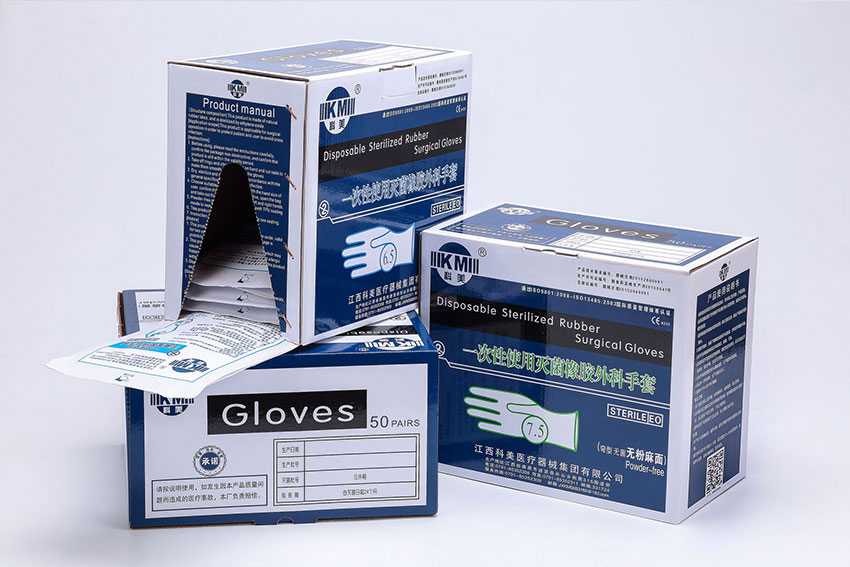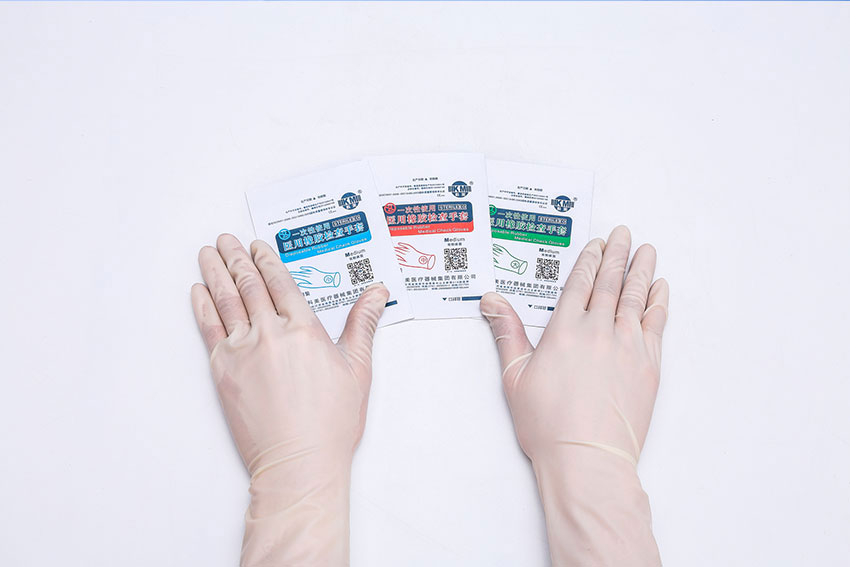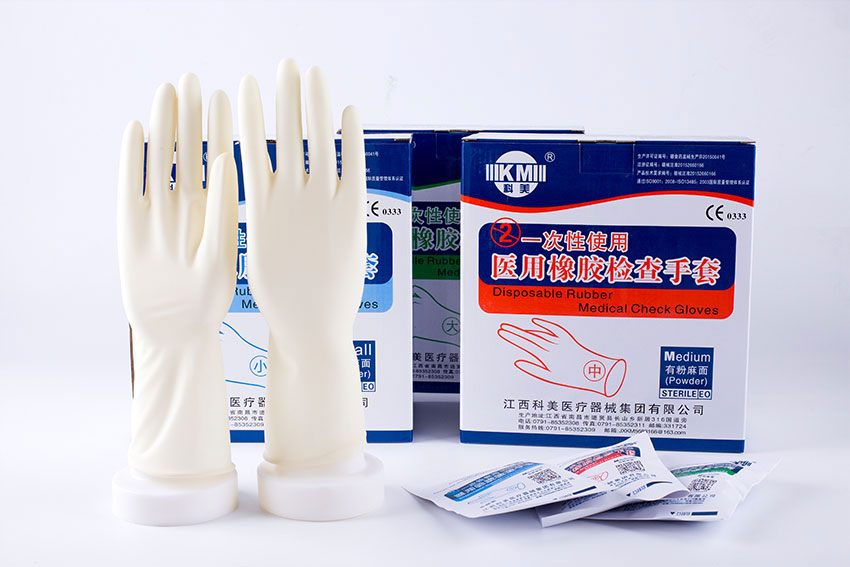A sterile material called medical gauze is used to wrap or cover wounds. Typically constructed of woven cotton or synthetic fibers, it absorbs seeping fluids while allowing wounds to “breathe.” Additionally, compared to many other fabric kinds, it is less prone to adhere to wounds. Medical gauze comes in a wide range of sizes and forms. Gauze comes in a variety of textures; some are dry, while others are soaked in lubricants, astringents, or other therapeutic substances.
The primary material used to make medical gauze has always been cotton. Its appeal is partly attributable to its breathability, absorbency, and lack of propensity to adhere to wounds. The majority of cotton medical gauze is made of tiny fibers. Its weave can be either loose, which allows a lot of air to get through to the wound underneath it, or tight, which keeps the wound well-insulated from the outside environment. The exact characteristics of a wound and where it is in the healing process usually determine whether to use tight- or loose-weave gauze.
Synthetic materials also gained popularity for gauze production in the 20th century. Synthetic gauze is frequently embossed to look like it has been woven rather than being woven. Its breathability, absorbency, and resistance to adhering are frequently on par with or even better than those of cotton.
Medical gauze comes in a variety of sizes and forms. Typically, it comes in rolls, strips, tiny pads, and huge sheets that may be cut to fit a specific wound. It is also sometimes available in larger or smaller rolls. For personal usage, small quantities of gauze can be acquired at a drugstore or pharmacy. Retailers of medical supplies also sell them in large volumes.
Some medical gauze is under the dry category. There are no additional healing ingredients inserted into this particular type of gauze. It can quickly absorb this seepage, making it the greatest option for a wound producing a lot of discharge.
Other varieties of medical gauze are manufactured with additional healing ingredients like petroleum jelly or antiseptic. These therapeutic substances have a variety of uses. They can, for starters, keep the wound moist. In turn, this could stop the gauze from sticking to the wound. The antibacterial characteristics of some healing substances can also help reduce the likelihood of infection at the site of a wound.
Two main types of medical gauze
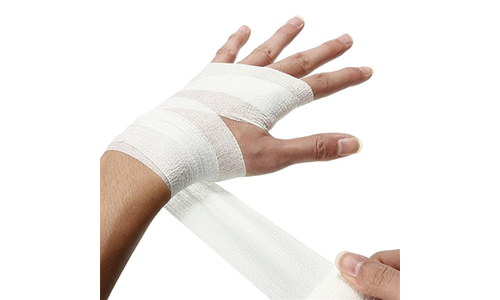
Medical gauze is used specifically in the treatment of wounds. Gauze is a fabric with several applications. Gauze’s great absorption capacity is used in gauze pads, (Knowledge: Everything About Gauze Pad) bandage rolls, and other medical dressings. It is a flexible substance that may be utilized either on its own or after being saturated with petroleum, as in Xeroform.
There are several options available when it comes to medical gauze, so it is advisable to consult with a doctor for advice. Make sure you are using sterile gauze if you are using medical gauze to treat an open wound.
Woven Gauze
The weave of woven gauze is loose and open. The fluid from the wound can be absorbed into the fibers because of the loose weave. The open weave of the gauze makes it easier for the wound fluid to travel through it and be absorbed by more absorbent dressings like sponges or pads of gauze (Knowledge: Differences Between Gauze Sponge And Gauze Pad). Gauze that has been weaved cannot be cut; instead, it will begin to unravel. Debris or lint can get trapped in the wound and prevent it from healing.
A common gauze that is used as a secondary dressing is woven gauze. It shouldn’t be applied directly to a wound since it could dry it out, making dressing removal uncomfortable, and it might harm any tissues that have just started to recover.
Non-Woven Gauze
Non-woven gauze is created from threads that mimic a weave but are compressed and condensed rather than woven. This tight design boosts the overall absorbency of non-woven gauze by assisting in the absorption of more wound fluid.
Non-woven gauze leaves fewer gauze fragments in the wound since it contains less free lint than conventional woven gauze. Any kind of debris in the wound might hinder healing, so those tiny bits of fluff and lint can be problematic. Non-woven fabrics are typically constructed of rayon or polyester, however, occasionally, they are combined. Compared to woven gauze pads, this gauze tends to be stronger and more pleasant. Non-woven gauze can be utilized as the main dressing.
Medical gauze pads bulk manufacturers produce both types of medical gauze.
Different Styles of Medical Gauze
Gauze Rolls
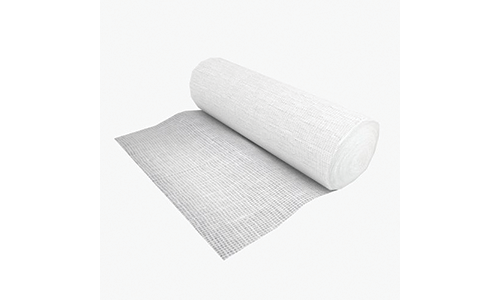
The surgical gauze roll has a wide range of uses and may be cut into various shapes and sizes. Surgical gauze rolls can be used for cleaning, bandaging, mending, and other purposes after being cut directly.
Surgery and wound care can both benefit from the use of surgical gauze rolls, which can be sterilized and combined with cotton rolls to create a gauze quilt. Gauze roll may be used either directly for washing and wound compression or may be utilized for surgical procedures and wound care following sterilization.
The medical gauze roll is constructed entirely from premium natural cotton. Rolls of surgical gauze are white, supple, and very water-absorbent. Absorbent gauze rolls are extremely soft, patient-comfortable, highly absorbent, and lint-free. The gauze roll has no thread and less fluff. Without a fluorescent agent, gauze rolls are non-toxic, non-irritating, and non-sensitizing. Surgical gauze roll offers convenient and affordable choices. There are several sizes, meshes, and plies of medical gauze roll available.
Gauze Pads
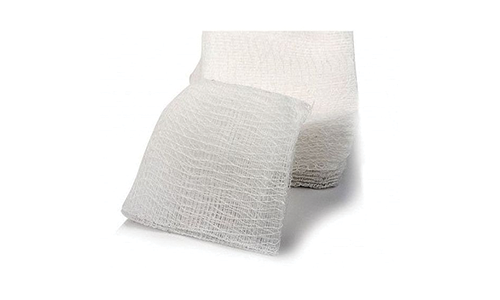
The gauze pad is an absorbent pad composed of 100% cotton that is wrapped in a layer of gauze and is best used for eye care. can be used to protect the incision and absorb exudate during ocular surgery.
These pads provide high absorption and extreme suppleness. The round shape improves patient comfort. provide a safe and gentle defense. Lint is lessened due to sealed edges. It can be used to protect the wound and absorb exudate during an ophthalmic procedure or eye care.
Gauze Dressings
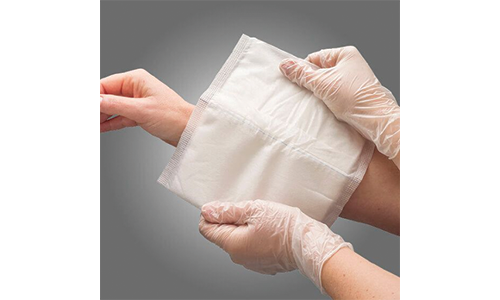
Gauze dressings are made of 100% cotton and have a soft outer layer of gauze that quickly absorbs moisture. A substantial volume of exudate may be absorbed with medical dressing gauze.
It offers high absorbency; rapidly transfers fluid to a center pad. excellent wound protection. Additionally, it also comes with low linting and a soft, comfortable feel. Minor wounds can be covered with this gauze bandage for medical purposes. This medical gauze bandage absorbs exudate and can be used to treat open wounds.
Gauze Sponge

Gauze sponges, which are available in both woven and non-woven variants, are typically used in therapeutic settings to treat wounds. Its open-weave structure eliminates excess exudate and dead tissue from the area.
Advantages of gauze for wound
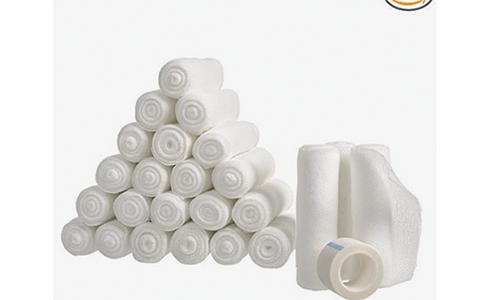
Flexibility
Gauze is frequently trimmed to fit certain wounds or torn to create the required shape. Gauze can be used as an alternative where bandages are difficult to apply firmly, such as in the regions around toes, fingers, or ears. Additionally, gauze or a gauze sponge may be needed for wounds that don’t suit the pad size of a bandage.
Convenience
One of the better options for bandaging is gauze. A sizable supply of gauze may frequently be added to the first-aid box at a reasonable price. Gauze is also exceedingly light, as are gauze sponges.
Simple Medical Treatment
Although gauze performs a good job of covering burns and open wounds, it hardly touches the surface it is covering. Since the gauze isn’t anchored to the wound, you may remove it without putting the patient through undue suffering. Gauze can also let in air and sunlight, both of which are crucial to the healing process.
Exposure to the air and sunlight, helps wounds clot more quickly. The damage may also be evaluated visually to some extent without having to remove the gauze to do so, which makes it possible to decide whether to change the gauze without having to reopen the wound.
Pressure
The medical personnel frequently applies a drain to the surgical incision once the gauze dressing is complete. The drain’s main function is to remove any fluids, but the pressure also causes the gauze to come together. While lessening the strain on the incision, this achieves the same outcome as a pressure dressing. The drainage will cause the gauze to contract, which helps to hold the skin together as it heals. For the recovering patient, this means fewer dressing changes.
What Is Gauze Used For
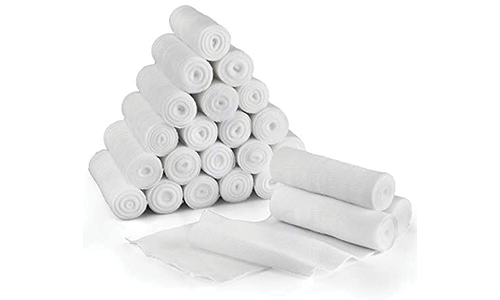
A gauze bandage serves a common purpose. It is a substance that is utilized to preserve and restore damaged components. Surgery requires it as a matter of medical necessity. Cotton or gauze can be used to make a basic gauze bandage. It is frequently used in people’s limbs, head, chest, and abdomen.
One layer of cotton fabric is also used instead of the previous material. Different cotton cloth thicknesses can be sandwiched together to improve thickness and protect the wounded region when employing a double-layer cotton fabric.
Hospital bandages are made of gauze and wrapped in fabric strips so that the medical staff may make knots and treat the patient’s injured region. Gauze bandages often comprise abdominal gauze bandages, front chest gauze bandages, rear waist gauze bandages, and so on. There is also a certain type of bandage gauze that is used to mend the joints and limbs of people.
To clean the wounds, medical gauze is applied to the wound surface to absorb blood and other exudates. Disposable gauze sponges are utilized in hospitals and medical facilities worldwide. The non-woven materials and others are used to make gauze sponges. They come in a wide range of sizes, and materials. Gauze bandages fulfill the following purposes-
- Stop the bleeding – Which will aid in sealing the wound and hasten the clotting process;
- Prevention of infection – To protect the wound from bacteria and physical harm
- Absorb exudate – to collect blood, plasma, and other fluids that have leaked from the wound, keeping them together and avoiding maceration;
- Reduce pain—either by compression, an analgesic effect from medication, or just by avoiding discomfort from more trauma;
- Debride the wound: To hasten to heal, remove debris and slough from the wound;
- Reduce psychological stress – To hide a healing wound from the patient’s and others’ perception.
What Is Gauze Made Of
Gauze is a transparent-looking, open-weave fabric that is lightweight and thin. Although it may also be created from synthetic fibers, this fabric is often made from natural fibers like cotton, linen, and silk. Due to its strength and absorbency, it is a versatile fabric that is used for a range of purposes. It is believed that gauze fabric, which was largely woven from silk, was created in Gaza, a hub for weaving in Palestine, probably in the 13th century. In actuality, the term “gauze,” which signifies silk in Spanish, is derived from this word.
One of two techniques—the plain weave or the basic leno weave—can be used to make gauze fabric. The leno weave method is used most frequently. Through this procedure, the fabric’s threads cross over one another and entwine with one or more filler threads to strengthen it while giving it a sheer look. The cloth is made lighter and stronger with this weave style while permitting unrestricted passage of light and air.
The plain weave is less frequently utilized in the production of gauze fabric. On a loom, this type of weave is made by firmly tying the weft and warp threads together. This weave’s woven strands provide a tight, flat surface ideal for printing and other finishing touches. The least costly weave is the plain weave since it is the easiest to make.
Although there are various uses for silk and linen gauze textiles, apparel and home décor are the most popular ones. Chiffon and silk gauze are comparable fabrics, however, silk gauze is lighter in weight. It is a very translucent, fragile fabric that feels smooth to the touch, has a drape that seems to float, and stains well with great color retention. Silk gauze absorbs color nicely, retains it, and is simple to paint on. The gauze was used as ceremonial wrapping for mummified mummies by the ancient Egyptians and by the Chinese during the Ming dynasty to create painted cloth dolls.
Bandages, surgical dressings, and medicinal sponges are all made of cotton gauze cloth. Especially when made with poly-blend fibers, cotton gauze cloth won’t cling or adhere to open incisions. It is a common cloth for dressing wounds because of this. To aid with healing, apply calamine lotion or zinc oxide to the bleached cotton cloth. The cloth is utilized during surgical operations to absorb fluids due to its absorbency.
Best gauze for packing wounds
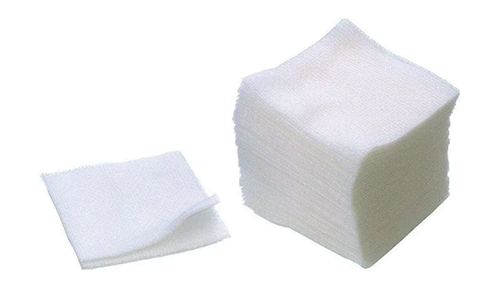
The most popular type of wound care dressing is medical gauze, a bleached white cloth or material used in bandages, dressings, and surgical sponges. There are sterile and non-sterile medical gauze pads available. Medical gauze sponges’ open weave pattern helps remove dead tissue from the wound’s surface. Gauze pads have moisture-wicking qualities, which help to avoid the maceration of skin tissue by vertically wicking fluid from the injury onto any secondary dressing.
Some varieties of gauze sponges are woven with X-ray detectable thread in case they are unintentionally left in people. Using sterile medical gauze manufactured by reliable PPE suppliers – Kemei is the most effective approach to keeping wounds clean, which is crucial.
You can maintain a sterile area around the wound by switching from standard nitrile gloves to sterile gloves. A variety of gauze products, including sterile gauze pads, bandage rolls, nitrile gloves, and wound cleaners, ought to be available at the local medical supply store. These can all aid in the ability to stay healthy.
China latex examination gloves manufactured by Kemei have been at the forefront of producing medical supplies and are dedicated to putting patients’ and healthcare workers’ safety first. They have provided hospitals with a consistent supply of medical equipment and strengthened national responses to epidemics thanks to their insights and product advancements.
Kemei is included in the trusted national trade organization on the nation’s white list, the China Chamber of Commerce for Import & Export of Medicines & Health Products (CCCMHPIE). Medical supplies (Learn: Best Medical Supply Companies in the World) and equipment during crises may be obtained from firms on the whitelist with confidence. They are one of China’s reliable medical suppliers during the pandemic because the latex surgical gloves manufacturer adheres to the organization’s requirements for the prevention of epidemics.
Things to consider when choosing medical gauze types
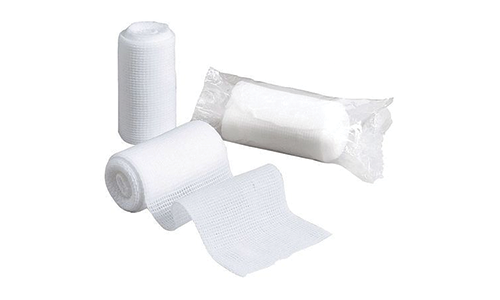
Absorbency
A medical gauze must have enough absorbency to maintain a clean, dry operating field and wound. You will use fewer sponges when using a high-quality medical gauze sponge with superior absorption, saving you time, money, and waste. The ability to absorb is essential for improving patient comfort since it keeps patients from ingesting things like blood, saliva, and debris.
Thickness
The fluid absorption and retention rate of medical gauze are directly proportional to its basic weight. The basis weight serves as gauze for the sponge’s material thickness. Naturally, a sponge’s absorbency increases with the number of “plies,” whether non-woven or woven. Additionally, additional thickness offers more cushioning for wounds, such as those caused by extractions.
Texture
Cleaning tools and surfaces can benefit from the use of a sponge with some roughness. A sponge comprised of abrasive materials might itch and hurt when used on delicate tissues. Therefore, a softer sponge with low adherence to the wound is a preferable option for extractions and other treatments that result in incisions.
Durability
You can use fewer sponges in each process by using sponges of a higher grade. Given the variety of uses for sponges, selecting a more durable brand can save you a lot of money.
Linting
Small fibers from fraying or tearing sponges frequently remain on dental tools or directly in wounds. It is crucial to select a sponge that doesn’t develop lint as these fibers can obstruct both therapy and recovery. The absence of lint is one advantage of non-woven sponges.
Fiber Types
An essential distinction between woven and non-woven sponges is the type of fiber used. Non-woven sponges can be wholly composed of cotton or a combination of polyester and rayon, as opposed to woven sponges, which are always made of cotton. Because cotton fibers become stronger as they get soaked, they are perfect for situations where there is more moisture.
Contrarily, because polyester is a non-absorbent material, its strength is unaffected by moisture. Because of this, polyester and rayon are frequently blended. Because rayon is absorbent and polyester is robust, the two fibers work well together. It should also be mentioned that polyester is not biodegradable, but cotton and rayon are.
Wholesale Sterile Gauze In Kemei
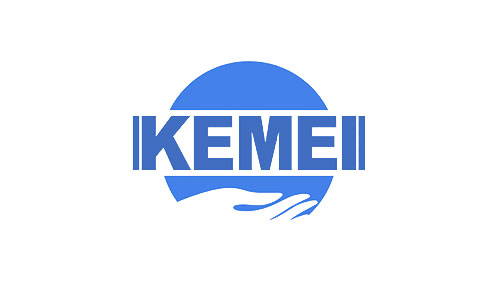
Through Kemei’s stringent quality control system and skilled inspectors, the wholesale gauze roll produced by them set the bar for clean and sterile medical supplies among other disposable medical wound dressing providers. All of the dressings may provide the wound with hygienic and long-lasting protection from external environmental damage.
Kemei Medical non-fabric and synthetic fibers are used to make disposable wound dressings, which are then disinfected using ethylene oxide. Dressings are used to clean wounds, mucous membranes, and skin. They can also be used to absorb bodily exudates after surgery. The material is soft, absorbent, and permeable, while the glue they employ has no allergens. All of their dispensed medical wound dressings are produced under the highest safety standards.
Conclusion
Gauze is a type of medical cloth used in the treatment of wounds. It has an open, loose weave. In truth, gauze, which is frequently comprised of cotton, works well for applying bandages to wounds, especially when other materials or textiles won’t adhere. The type of bandaging used frequently influences how fast or slowly a wound will heal. The most significant way to aid and promote healing is using the proper gauze and bandage.
China’s leading provider of disposable medical gauze dressings, Kemei, provides top-notch goods at competitive costs. The superior absorbent cotton yarn used to make disposable medical gauze dressings is cut and folded into convenient sizes. These dressings collect bodily exudates during surgery and are most effective for cleansing skin, wounds, or mucous membranes. can be used in conjunction with the majority of wound care drugs to treat wounds.
You can contact Kemei for more information about the same.
FAQs
How To Put Gauze On A Wound
Unroll some gauze wrap and lay it flat if you need to cover a large wound. With the thumb, hold the wrap’s edge against the gauze pad’s edge after covering the wound with gauze. Wrap the wound twice with the wrap before rolling it up. Use tape or a clip to hold the wrap in place.
How To Remove Gauze From The Wound
- Remove the tape off the skin slowly.
- To remove the old dressing, take a clean (not sterile) medical glove and peel it off.
- Unless the healthcare professional directed you to remove the dressing dry, if the dressing adheres to the wound, moisten it and try again.
- The old dressing should be placed in a plastic bag and left away.
What Does Gauze Look Like
A thin, transparent material with an open, loose weave is called gauze. Technically speaking, “gauze” refers to a weave structure in which the weft threads are organized in pairs and crossed before and after each warp yarn to maintain the weft’s rigid alignment.
Sterile vs Nonsterile Gauze
Gauze, a brand of sterile gauze dressings is designed to fight germs and keep open wounds clean. In addition to being more expensive than non-sterile gauze, sterile pads are frequently designed to wick away wound drainage and keep the area clean and safe. For closed wounds, non-sterile gauze pads are more frequently employed.
Gauze vs Nonstick Pad
For cleaning and treating wounds, scrapes graze, and small burns, gauze pads are suitable. These extremely absorbent pads are made to assist remove debris and bacteria from the damaged region while drawing fluids away from the wound site.
A gauze pad that won’t stick to the skin and is nonstick. Designed for burns and wounds on delicate skin. Non-Adherent dressings offer wound care security and fluid absorption without causing skin tissue damage.
